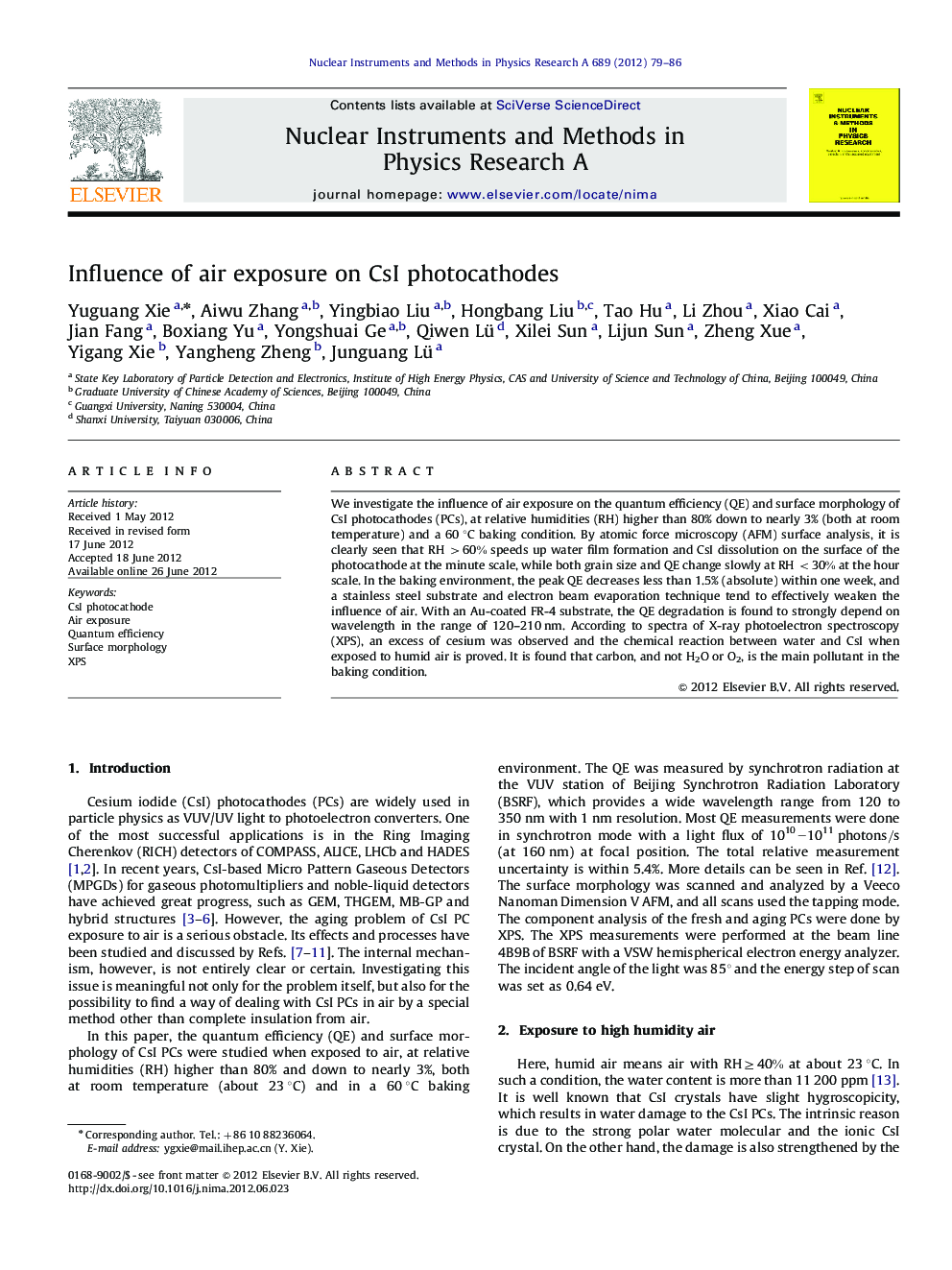| Article ID | Journal | Published Year | Pages | File Type |
|---|---|---|---|---|
| 8181433 | Nuclear Instruments and Methods in Physics Research Section A: Accelerators, Spectrometers, Detectors and Associated Equipment | 2012 | 8 Pages |
Abstract
We investigate the influence of air exposure on the quantum efficiency (QE) and surface morphology of CsI photocathodes (PCs), at relative humidities (RH) higher than 80% down to nearly 3% (both at room temperature) and a 60 °C baking condition. By atomic force microscopy (AFM) surface analysis, it is clearly seen that RH >60% speeds up water film formation and CsI dissolution on the surface of the photocathode at the minute scale, while both grain size and QE change slowly at RH <30% at the hour scale. In the baking environment, the peak QE decreases less than 1.5% (absolute) within one week, and a stainless steel substrate and electron beam evaporation technique tend to effectively weaken the influence of air. With an Au-coated FR-4 substrate, the QE degradation is found to strongly depend on wavelength in the range of 120-210 nm. According to spectra of X-ray photoelectron spectroscopy (XPS), an excess of cesium was observed and the chemical reaction between water and CsI when exposed to humid air is proved. It is found that carbon, and not H2O or O2, is the main pollutant in the baking condition.
Related Topics
Physical Sciences and Engineering
Physics and Astronomy
Instrumentation
Authors
Yuguang Xie, Aiwu Zhang, Yingbiao Liu, Hongbang Liu, Tao Hu, Li Zhou, Xiao Cai, Jian Fang, Boxiang Yu, Yongshuai Ge, Qiwen Lü, Xilei Sun, Lijun Sun, Zheng Xue, Yigang Xie, Yangheng Zheng, Junguang Lü,
